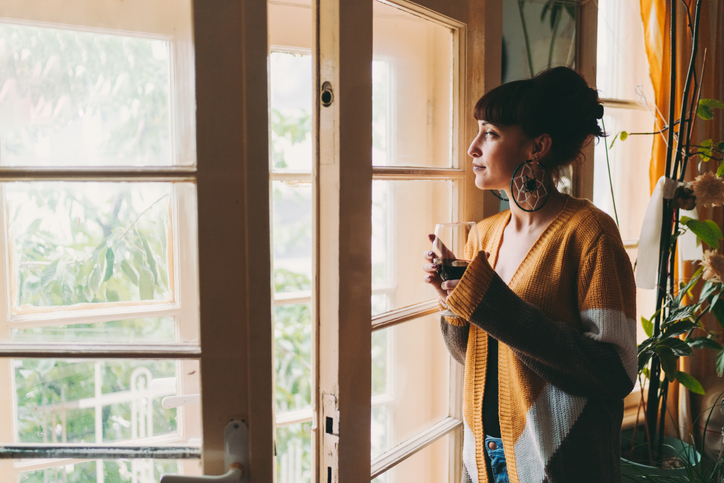 I’d argue that mindfulness is one of the biggest health trends of our time. It promises less stress, more inner peace, and a solid dose of self-awareness. It’s also a multi-billion-dollar industry, from apps that dole out guided meditations to full-on retreats in tropical locales.
I’d argue that mindfulness is one of the biggest health trends of our time. It promises less stress, more inner peace, and a solid dose of self-awareness. It’s also a multi-billion-dollar industry, from apps that dole out guided meditations to full-on retreats in tropical locales.
But before you download the paid version of Headspace or investigate roundtrip fares to Bali, ask yourself this important question: Am I ready to stop operating on autopilot, repeating the same less-than-healthy patterns over and over again?
I’ll let you ponder one that for a minute.
What Is Mindfulness, Anyway?
Mindfulness is a 2,500-year-old practice. It’s the ability to be fully present, where you’re totally tuned into what’s happening, what you’re doing, and why you’re doing it — in the moment and without judgement.
A lot of my health coaching clients are convinced they’re being mindful when it comes to their eating habits, yet somehow, manage to polish off a bottle of wine or wheel of cheese without realizing it. Now, I’m all for hedonistic behaviour, but if your choices leave you full of regret, shame, and guilt, it’s probably worthwhile to pursue a different strategy.
Mindfulness isn’t for the faint of heart. It also isn’t great for perfectionists (if you’re determined to “get it right”), those with limited patience, or anyone looking for a temporary fix. Or if you don’t believe change is possible.
The Problem with Mindfulness
Contrary to most things in our instant gratification world, you probably won’t get results right away. Which is why mindfulness isn’t a great fit for everyone. In fact, one study showed that it can actually make stress worse, although it’s not clear if the outcome was related to the participants’ mindset, their mode of mindfulness, or a combo of both.1
Another struggle that comes up with a mindfulness practice is that it can be uncomfortable to take a good hard look in the mirror. When you embark on a mindfulness journey — and stick with it — you will reprogram your thoughts and actions. Assuming you want to, you’ll begin to recognize your self-sabotaging behaviours and establish different habits. Heck, you might even start to like yourself more.
In this study, researchers from the University of Utah recruited 1089 undergrads, ranging in age from 18 to 53, to complete questionnaires about different traits:2
- Mindfulness (their tendency to be aware of their thoughts and feelings, and to respond in a non-reactive, non-judgmental way)
- Well-being (how much they felt a sense of self-acceptance, autonomy, and control over their environment)
- Clarity of self (how stable, clear, and unconflicted their views about themselves were)
Researchers found that the more mindful students also reported experiencing more well-being. Diving deeper, they also discovered that certain aspects of mindfulness were more impactful than others, specifically, students who were non-judgmental about their thoughts and feelings had a clearer and stronger sense of self. One researcher adding, “If we don’t expect to beat ourselves up for our flaws, we may be more willing to take a clear look in the mirror.”
So, Who Is Mindfulness For?
Obviously, there are benefits to embracing mindfulness, from having more self-compassion to changing your relationship with food. But is it right for you? It might be, if you fall into one of these categories:
- You struggle with chronic stress, anxiety, or depression
- You have trouble focusing on single tasks
- You feel overwhelmed or out of control
- You’re worried something is wrong with you
- You have a hard time putting yourself first
- You eat out of boredom or for emotional reasons
- You self-sabotage
- You tend to look at the negatives side of things
- Your relationship with yourself or others isn’t what you’d like it to be
- You’re ready to stop going through life on autopilot
Make Mindfulness Work for You
If beating yourself up, or feeling guilt, shame, or other useless emotions hasn’t worked for you in the past, perhaps you’re open to trying something different. Perhaps you’d be keen on doing something that didn’t require forcing, white-knuckling, or falling off a wagon.
It’s one thing to decide to be more mindful, but it’s something entirely different to know how to do it. And that’s the secret sauce the separates the folks who start to move the needle on their thought patterns (and health goals) from those who struggle to get started.
Take the pressure off
Most people think being mindful means they’ve got to commit to an hour-long daily meditation practice with ornate pillows, dimmed lights, and chanting voices. Setting unrealistic expectations will only make you feel worse. Instead, start with something that feels easy that you can do anytime and anywhere.
Try this: Your brain craves periods of stillness, so step away from your phone, TV, computer, and yes, family members, and sit quietly, taking a much-needed pause from the constant flood of info coming at you. For 30 seconds, do nothing except for being still and breathing. Can’t sit still the whole 30 seconds? Totally normal. Do the best you can, and, this is key, don’t judge yourself for what you can or can’t currently do.
Notice your breathing
Is it shallow and fast or deep and calm? Your breathing affects your mind, so if you’re someone who’s constantly overthinking, worrying, anticipating, or stressing, I’d recommend reviewing your breathing patterns. This study from the Journal of Neurophysiology shows how deliberate breathing activates different parts of the brain associated with emotion, attention, and awareness.3
Try this: Consciously inhale and exhale to a set rhythm. I personally love “triangular breathing,” a variation of box breathing, where I inhale for six seconds, hold for two seconds, and exhale for eight seconds. It doesn’t have to be that complex either, just slow down your breathing, making your exhales longer than your inhales. Not only can this make you feel calmer and more focused, it has the power to regulate your nervous system and allow you to be still in the present moment, aka mindfulness.
Be aware of judgements
Consciously or not, you’re constantly judging yourself and others. Dozens of times per day, you’re evaluating your decisions, appearance, and self-worth, replaying scenarios and conversations, and trying to mentally strongarm outcomes that are out of your control. It gets exhausting. On a subconscious level, judgements are how you protect yourself, and you know how much your brain likes to keep you safe. You don’t have to be thrilled with every thought or emotion, but it’s worth your while to a create safe place for them to live — even for 30 seconds.
Try this: This is the time to notice, not to fixate and freak out. It’s an opportunity to sit with uncomfortable emotions and give yourself room to feel them in the moment. So, practice observing your thoughts without reacting to them. The more you practice embracing all the parts of you (the good and the painful), the easier mindfulness will become.
Get outside
Thanks to the pandemic, we got fairly used to staying indoors, working too much, perfecting our sourdough and banana bread recipes, and completely neglecting the great outdoors. But there’s something so freaking magical about the great outdoors. The grass, the trees, the dirt, and of course, the fresh air. Being surrounded by nature has some pretty powerful benefits too, including reducing muscle tension and blood pressure, decreasing cortisol, and boosting endorphins.4
Try this: Take a walk in the woods, move your yoga practice to the backyard, or just stand in the grass barefoot and notice the sights, sounds, and smells. Connecting with nature allows you to slow down and be more present, which is what mindfulness is all about. Can’t get outside? Evidence suggests even just looking at photos of natural landscapes can have similar benefits.5
Mindfulness: Health Trend or Key to Happiness?
Wouldn’t it be nice to feel less stressed and less critical, rather than racing through each day overwhelmed, overworked, and believing you’ll be happy if you could just get to the other side of your challenge du jour? Listen, mindfulness isn’t for everyone. But if you’re ready to flip the script on your current mindset (and I think you are), use these tips to get started:
- Sit in silence for 30 seconds, away from your phone, computer, or TV
- Slow your breathing, being conscious of your inhales and exhales
- Practice observing your thoughts without reacting to them
- Notice the sights, sounds, and smells of the great outdoors
What do you think? Does mindfulness work for you?
The post Why Mindfulness Isn’t for Everyone appeared first on Mark's Daily Apple.





